Jacopo Strada (c. 1515-1588), antiquarian, architect, and antiquarian dealer, created a 30-volume corpus, the Magnum ac Novum Opus (MaNO), for his patron Johann Jakob Fugger in the mid-16th century. The project brings together Jacopo Strada's numismatic corpus, analyzes it in its historical and artistic context, researches the sources, and elaborates its significance for the scientific history of numismatics and antiquarian research in the 16th century.
Contact:Dr. Volker Heenes and Dr. Dirk Jacob Jansen
The research and indexing project of the Gotha Collection and Research Network focuses on Gotha as a centre of natural history research around 1800 that was part of a Europe-wide network.
Responsible: Dr. Olaf Simons
The subject of the project is the source-based analysis of the sovereign finances of the Duchy of Saxe-Gotha and Altenburg in the late 17th and 18th centuries. The focus is on the long-term development of ducal revenues and expenditures within the institutional framework of the Gotha financial administration combined with an in-depth analysis of selected areas of revenues and expenditures.
Contact : Dr. Holger Kürbis
In the midst of 15th century Florence, at the time of the rise of the famous Medici - from Cosimo the Old to his son Piero il Gottoso (the Gouty) to Lorenzo the Magnificent - Matteo Palmieri (1406-1475), Florentine politician and humanist, writes in the language of the people, i.e. Italian, a guide on how a citizen of his time should behave most irreproachably.
To this end, he continues to draw on thoughts from antiquity, especially Cicero and Aristotle, which he adapts to the needs of his own time in an amazingly free, unconcerned manner. He thus becomes an important middle member of Italian thought movements ranging from Dante to Petrarch and Boccaccio to Castiglione and Machiavelli. In its particular genre, Palmieri's book has no equal in its era.
As part of the project, an introduction of eighty to one hundred pages will be produced to accompany the bilingual printed version of the text that is already available.
Contact: Peter Michael Schenkel, M.A. Funding : DFG funding Duration : November 2021 to April 2022
My research project at the Max Weber Kolleg and the Gotha Research Centre in collaboration with Gotha Research Library is a part of the international research project 'Natural Law 1625-1850' under direction of Prof. Dr. Knud Haakonssen, Dr. Frank Grunert and Prof. Dr. Diethelm Klippel.
My work and research has a twofold aim. First, I am developing and implementing a prosopographical data model concerning early modern natural law scholars with the specific aim of creating a database that can benefit all researchers and students with interest in early modern natural law and its institutional, social and political setting. The database is first and foremost a detailed open reservoir of information that contains not only structured biographical and bibliographical data but also links to digitised source material as well as commentaries made by individual specialists. Building upon this reservoir, a long-term goal is to develop and implement analytical visualisation tools in the database, so users easily can conduct both general and specialised data explorations. The creation of such a database is in essence a transnationally collaborative and open-ended digital enterprise, which also means that populating and expanding the database rely on contributions from the already established research networks within the Natural Law 1625-1850 project and on widening the circle of contributors in the field. The basic aim of the database is thus to provide an essential tool for the Natural Law project to compile and structure data and conduct research on early modern natural law scholars, their works and their institutions.
Within this research framework and on the basis of the Natural Law database, I am conducting a comparative study of the disciplinary differences in natural law teaching at a selected number of German and Scandinavian universities; i.e. I am examining what kind of natural law was taught in which faculty at each of these universities during the late seventeenth and early eighteenth centuries. By studying academic-institutional sources (e.g. lecture catalogues, student matriculations, consistorial accounts), as well as educational sources (e.g. text books, lectures, notes), I wish to analyze the disciplinary shifts and displacements of natural law teaching during the early modern period, and to what extent these disciplinary displacements correlate with the intellectual-historical development of natural law that is described in the current historiography. By examining who taught what where, and how and why this changed through time and space, my main research aim is to place and trace the academic teaching of natural law in its historical and institutional context, thereby making an important historical contribution to the study of natural law.
Contact: Dr. Mikkel Munthe Jensen
Laufzeit: 01.01.2018–30.06.2020
Image:Vignette from Pufendorf: De officio hominis et civis, Utrecht 1752.
In the joint project "[NUMiD] Shaping History / Preserving Values", the universities in Düsseldorf, Erfurt and Frankfurt/M., supported by the Numismatic Collection of the National Museums in Berlin and in close cooperation with 25 university coin collections from all over Germany, are implementing a joint research, teaching and exploitation concept in the field of collection-based numismatics. The network forms a cluster of globally unique, innovative basic and cutting-edge research. The project asks in three ways how coins shape history and preserve values: first, the question relates to the ways in which coins of Greco-Roman antiquity have shaped history and preserved values in their dual function as money and medium of communication; second, to how university collections have been able to shape history and preserve values' across their modern collecting history on and with their numismatic holdings in research, teaching, and outreach; And thirdly, it takes a look at the current challenges of shaping history and preserving values today and in the future with pioneering models of database-supported basic documentation, innovative teaching and targeted public relations work.
Contact: Prof. Dr. Martin Mulsow
Funding: BMBF
Laufzeit: 01.01.2018–31.03.2020
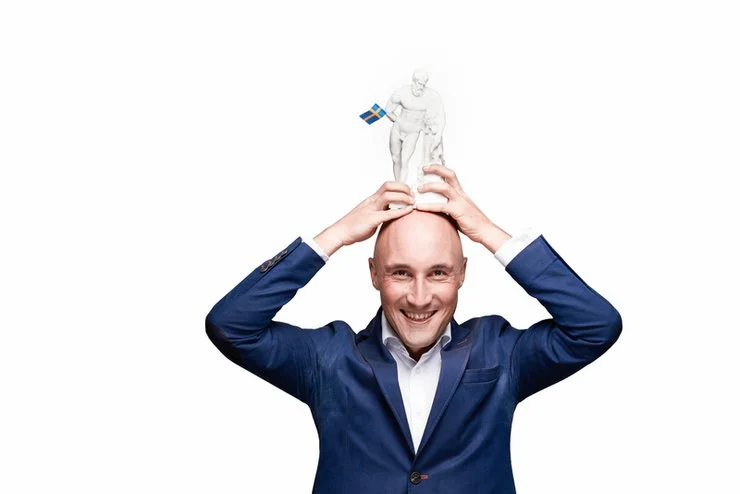
Reaching for Atlantis' focuses on telling the history of objects that were subject to the massive reinterpretation of material culture under the Swedish Empire (ca. 1650-1720). Establishing a digital repository will allow to bring together contemporary as well as previous and later contextualisations of selected objects. Opening up a diachronic view on their multi-layered 'cultural biographies' with the help of a digital visualisation, the project will break new ground to make objects the oculars of paradigmatic shifts in antiquarianism and the pre-Linnaean history of science, permitting deep insights into the social dimensions and epistemological frameworks of early modern collecting. The project is funded by the Volkswagen Foundation (Freigeist Fellowship).
contact: Dr. Bernhard Schirg
May 2018 - April 2023, affiliation with Erfurt university until October 2020, from June 2021 affiliation with Hamburg university
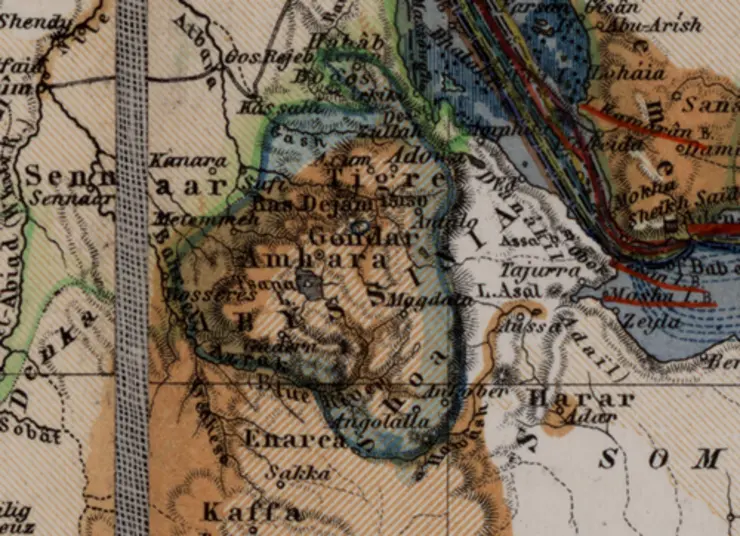
The research project consists of two partner projects, which are carried out in parallel in France (funded by ANR) and in Germany (funded by DFG). The aim of the research project is the systematic collection, classification and analysis of historical maps from and about Ethiopia, many of which are unknown in Ethiopian research. Findings of map material that is still completely unknown even to the participating researchers, which will offer important cultural-historical and historical insights, are to be expected in the process. This will not only close a gap in the global history of cartography, but also make an important contribution to the preservation of indigenous territorial knowledge, which was incorporated into maps produced on the basis of local employees, especially in the phase before colonization, and thus of original African cultural heritage. This is also a contribution to "nation-building" in Ethiopia, where reliable material on socio-political territorial history hardly exists. The project combines digital methods with historically grown Northeast African or Ethiopian research and a fund of historical map archive treasures that are largely unprocessed. The goal is the publication of a book documenting, analyzing and indexing the most important maps, and a digital database to be created by the French partners in cooperation with the German partners to document and index map material important for research.
For more information, please visit LA LETTRE De L'EHESS.
Duration: 01/2016 - 01/2019
Funding: DFG
Cooperation partners: École des Hautes Études en Sciences Sociales (EHESS), Paris - main partner through ANR funding of the French partner project Gotha Research Centre and Gotha Research Library of the University of Erfurt Mekelle University, Tigray, Ethiopia Max Planck Institute for Ethnology, Halle/Saale Centre français des études éthiopiennes (CFEE), Addis Ababa, Ethiopia Job-Ludolf Centre for Ethiopian Studies, University of Hamburg.
Researcher(s): Dr. Eloi Ficquet (project manager / EHESS, Paris) Assoc.-Prof. Dr. Wolbert Smidt (project manager / Mekelle University, Ethiopia) Prof. Dr. Iris Schröder (Deputy Director of the Gotha Research Centre / University of Erfurt) Fesseha Berhe (Department of History and Heritage Management / Mekelle University, Ethiopia / Herzog-Ernst scholarship holder at the Gotha Research Centre 2016).
Publication: A publication is in preparation.
Image: Ethiopia, excerpt from: Hermann Berghaus, Chart of the World, 6th edition, Gotha: Justus Perthes 1871, © Gotha Research Library of the University of Erfurt.
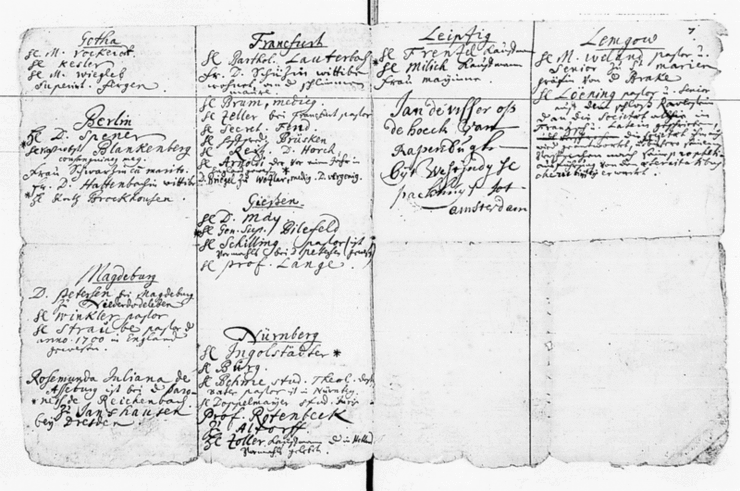
Around 1700, Philadelphia, the idea of an interdenominational covenant of the "children of God," became a widespread ideal of German Pietism. The idea was propagated especially by the followers of the English community of 'Philadelphians'. Research has long suspected that the English Philadelphians possessed substantial influence on both radical Pietism and the Herrnhuters, as well as on broader social debates in the Old Kingdom. But what exactly were these influences? In the Gotha Research Library lies - almost untouched by research - a geographically arranged 'Catalogus amicorum in Germania', which served the Philadelphians as a starting point for their German mission, together with a volume of letters from this group. In addition, there are important holdings in other archives that have also received little attention from scholars.
Based on these sources, the project will reconstruct the early network of Philadelphians between England and Germany as well as the social and cultural mediating role of their ideas. Particular attention will be paid to the role of language: Many German contemporaries saw the language of the Philadelphians - which had ultimately emerged through translations from English - as the Pietist language par excellence. But it remains to be specified what linguistic and cultural contribution the group actually made. The project thus aims to elicit the emergence of the language of Pietism, perceived as identity-forming, through the example of the German Philadelphians, and in doing so to investigate the role that translations played in the service of cultural transfer.
Contact person:Dr. Lucinda Martin
Funding: DFG
Duration: 07/2014 - 07/2017
Image: page from the "Catalogus amiconi in Germania" of the Philadelphia Society, 1702, FB Gotha Chart A297, 7.
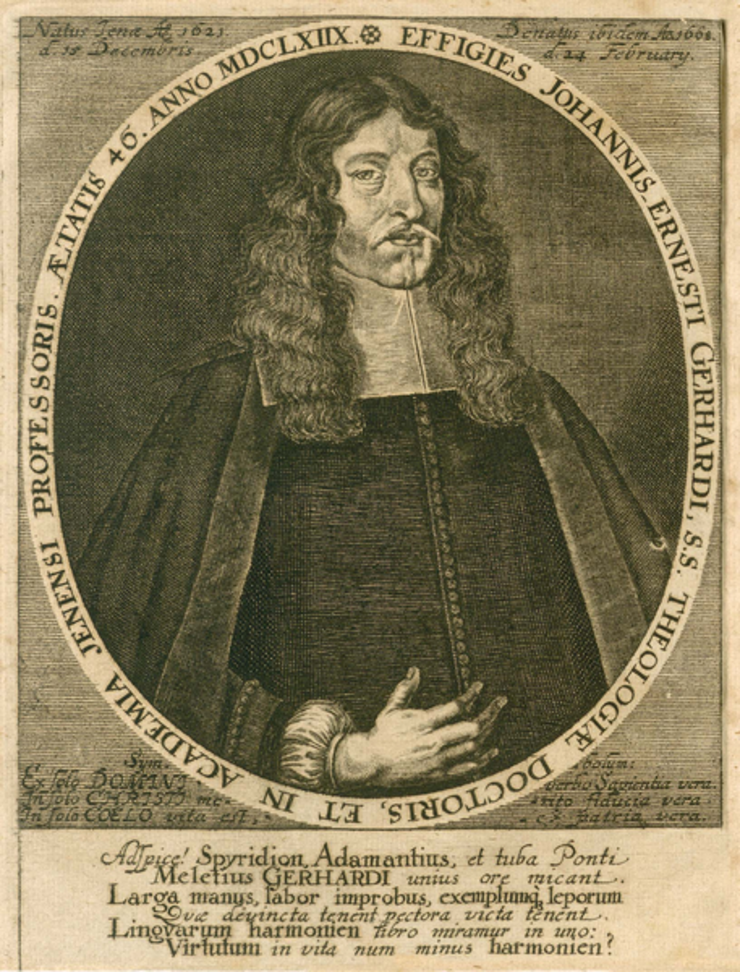
funded within the HERA project "Encounters with the Orient in Early Modern Scholarship", in cooperation with Prof. Charles Burnett (The Warburg Institute, London UK), Dr. Jan Loop (University of Kent at Canterbury, UK), Prof. Bernd Roling, Freie Universität Berlin), Prof. Outi Merisalo (University Jyväskylä, Finland), Prof. Gerard Wiegers, (University of Amsterdam). Duration: 3 years, 2013-2016
Johann Gerhard, orientalist educated theologian and one of the leading Lutherans in Germany, considered Hebrew the "matrix omnium aliarum linguarum"; the newer idioms were burdened with the original sin of Babel, only those of the Semites were not, because they had not participated in the building of the tower. Gerhard's son, Johann Ernst Gerhard the Elder (1621-1668), directed his interest early on to these "Semitic" languages. At the age of 26, in 1647, he republished Wilhelm Schickard's Hebrew grammar and wrote as an appendix his own Harmonia linguarum orientalium, scil. It is the time when something like a Semitic language family is just beginning to emerge in research : Christian Rave publishes his Generall Grammer for the Ebrew, Samaritan, Calde, Syriac, Arabic, and Ethiopic Tongue in 1648.
For Johann Ernst Gerhard there is an unusually favorable source situation: In the Gotha Research Library not only his printed works and the 6000 volume library (by him and his father) are preserved, but also 1450 letters to him, notebooks, the travel diary of his Peregrinatio academica as well as the annotated Wittenberg dissertations. In addition, the genealogical book he kept on his peregrinatio has been made available to us from a private source. This makes it possible to examine him as an example of the type of theologically influenced Orientalist.
Since 1644 Gerhard had a friendship and a close exchange of letters with Hiob Ludolf, the three years younger - at that time twenty years old - student from Erfurt, who was interested in oriental languages and especially in Ethiopian. Ludolf studied in Leiden from 1646 with Jacob Golius and Contantin L'Empereur, and then traveled to Paris as a tutor to Grotius's successor as Swedish envoy to the French capital, Baron Schering von Rosenhahn. After Rosenhahn sent him to Rome, where Ludolf came into contact with Ethiopians, Ludolf followed his master around 1650 to Ninköping and Stockholm, where numerous scholars had gathered in Queen Christina's circle, not least the linguists Christian Rave and Samuel Bochart. From there, Ludolf recommended his friend Gerhard to numerous Orientalists in the Netherlands when the latter embarked on his own peregrinatio academica in the spring of 1650.
After his studies in Wittenberg and his peregrinatio to Holland, France and Switzerland, Gerhard first made a career as a theologian at the University of Jena. He published on the harmony of the Gospels and on numerous exegetical and theological questions. It was not until the mid-1660s that he returned to his orientalist interests. And he did so with two series of publications pursued simultaneously: In the first, he illuminated the various Oriental churches; the second was even more ambitious, for it led beyond the circle of Oriental churches, endeavoring to tract the religions of the whole world.
Funding: HERA
Duration: 2013 - 2016
Researcher: Dr. Asaph Ben-Tov
Further on:
HERA project "Encounters with the Orient in Early Modern Europe."
Asaph Ben-Tov's J.E. Gerhard Blog
Publication:
As the first fruit of the HERA project, the anthology "The Teaching and Learning of Arabic in Early Modern Europe," edited by Jan Loop, Alastair Hamilton, and Charles Burnett, was published by Brill in Leiden in February 2017. Through 13 case studies, this volume offers an innovative look at the efforts of early modern Europeans to master the Arabic language. Like the HERA project in general, the careful case studies in this volume strive to explain the contemporary contexts that made learning a difficult Oriental language possible and prestigious-even in parts of early modern Europe where such knowledge served no immediate practical purpose. The book is also available via open access.
Image: Johann Ernst Gerhard (1621-1668), from Leichenpredigt.
The life and work of the Baltic-German writer and publicist Garlieb Merkel (1769-1850) are internationally significant from two perspectives: From the perspective of German Studies, Merkel is considered an interesting, yet ambivalent figure due to his work in Germany from 1796-1806, because on the one hand he was a friendly comrade-in-arms of renowned writers such as Herder, Wieland, and Seume, but at the same time he was one of the most persistent opponents of the (early) Romantics, who were based primarily in Jena, as well as Goethe. His merits as "inventor of the German feuilleton" during his years as a publicist in Berlin (1799-1806) are undisputed. From the point of view of Balticists and historians of Eastern Europe, Merkel is held in high esteem as the most effective representative of the (late) Enlightenment in Livonia, especially in the Baltic region itself, because he first made a name for himself through his sensational polemic Die Lettten vorzüglich in Liefland am Ende des philosophischen Jahrhunderts (1796), and later through his historical treatises, translations and his decades-long journalistic work in Riga as an eloquent advocate of the autochthonous population, he earned great merits for self-determination, language, history and culture of the Latvians and Estonians. In the run-up to the 250th anniversary of Merkel's birth, Merkel's extensive, predominantly unpublished correspondence with his German and Livonian friends and correspondents is now being edited in toto and will be published in the fall of 2019 by edition lumière (Bremen). The project thus makes a flanking contribution to the parallel research on "Gotha around 1800".
Contact: Dr. Dirk Sangmeister
Funding : Ernst-Abbe-Stiftung (Jena)
Duration : September 1, 2017 - August 31, 2019
Johann Gottfried Seume's frank autobiography My Life is one of the most important memoirs from the so-called "Goethe period," but to this day it is known only in the abridged and smoothed version published by the publisher Georg Joachim Göschen three years after his friend's death in 1813 for fear of censorship and criticism. All works and individual editions available since then, as well as all literary-historical accounts and philological studies, are based on this then mutilated version. However, Seume's original manuscript of his life story has survived the adverse course of time: the manuscript, formerly in the possession of Stefan Zweig, is now part of the rich holdings of the Bibliotheca Bodmeriana in Cologny near Geneva, which has now agreed with the Research Center on the preparation of a text-critical and extensively annotated edition of the complete manuscript. This first-ever unabridged edition was published by Wallstein Verlag (Göttingen) in January 2018. Contact : Dr. Dirk Sangmeister Funding : Foundation for the Promotion of Science and Culture (Hamburg) Duration : 01/2017 - 08/2017
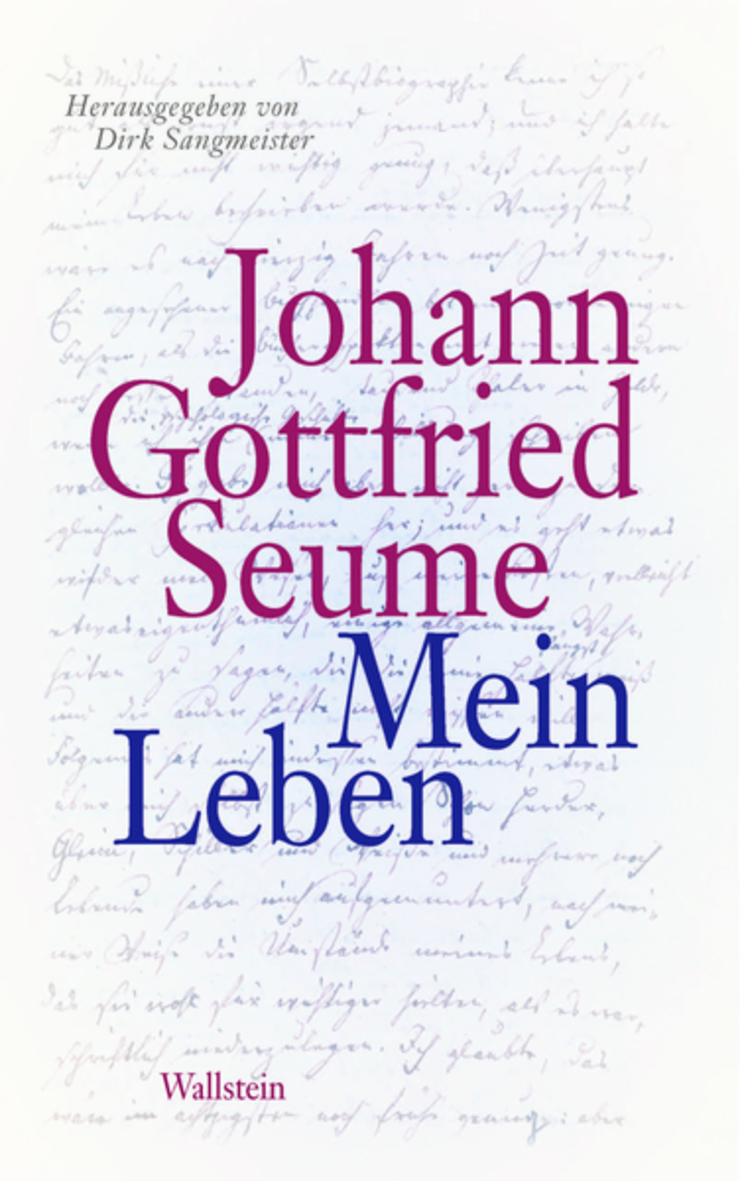

The Gotha Research Library and Gotha Research Centre are conducting collection-based research on the history of early modern education in a three-year project funded by the Thuringian Ministry of Education, Science and Culture. The basis for this is the sources on the history of education collected between 1640 and 1732 by the ducal house of Saxony-Gotha-Altenburg, which are now stored in the various institutions at Friedenstein Castle (the Research Library, the Thuringian State Archives of Gotha, the Friedenstein Castle Foundation) and the Gotha Municipal Archives . The aim of the project is to make the hitherto almost unknown collection holdings visible to researchers and the public in their genesis and context, and to demonstrate their potential for European historical educational research in an exemplary manner. The question of the genesis and change of pre-modern school and educational structures as the basis of or in interaction with early modern cultures of learned knowledge is the guiding principle. The focus is on a practice- and actor-related perspective. The project will be implemented in two closely related subprojects, in which the sources will be qualified on the basis of two pilot studies and a research infrastructure will be designed(Gotha Portal zur Bildungsgeschichte der Frühen Neuzeit, Digitales Repertorium). This includes publications, third-party funded projects, workshops and conferences. The aim is to create a sustainable profile for the history of education in the early modern period at the research location Gotha.
Direction:
Dr. Kathrin Paasch, Gotha Research Library
Prof. Dr.Martin Mulsow, Gotha Research Centre (since 01.08.2015)
Prof. Dr. Alexander Schunka, Jun.-Prof. Gotha Research Centre (until 31.07.2015)
Scientific employees:
Dr. Shirley Brückner (until 31.05.2017)
Jens Nagel M.A. (until 31.05.2017)
Former employees:
Image: Sigismund Evenius: Christliche, Gottselige Bilder-Schule. Jena 1636, FB Gotha Theol 8° 371/5.
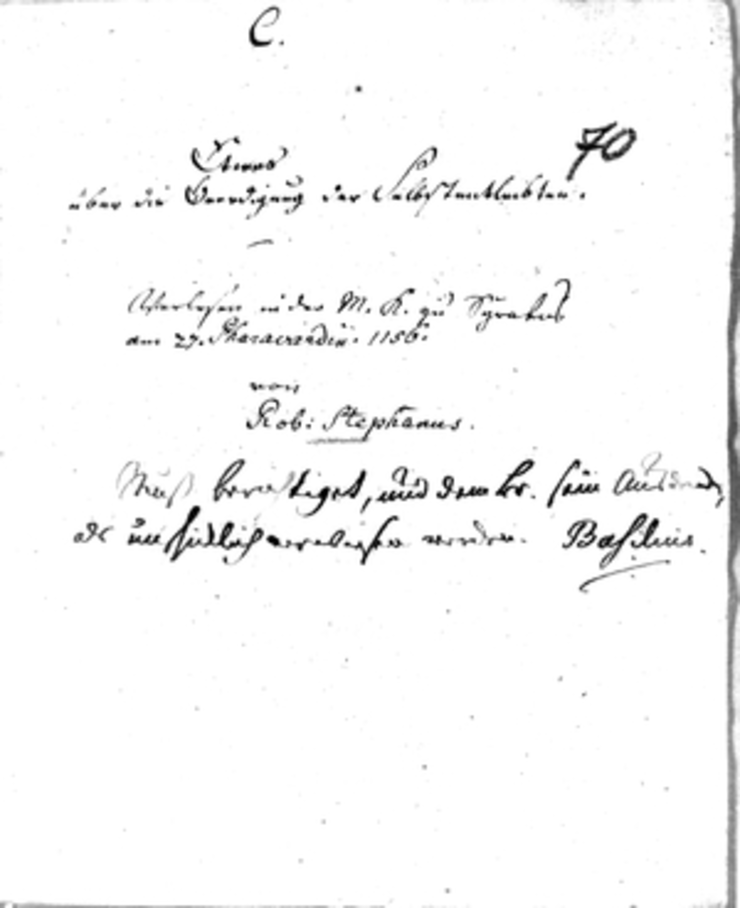
The goal of the Illuminati Order, founded in 1776, was the enlightenment and moral perfection of its members; this was to be achieved through the imparting of knowledge and the education of its members by their superiors in various "classes" and secret degrees. The previous research on the Illuminati has therefore mainly concentrated on the organizational structure as well as on the so-called 'higher knowledge' of the order as its actual arcanum. As documents of the order one knew consequently so far above all printed papers, degree drafts and the correspondence of the leading members among themselves; the temporal emphasis lay thereby in the years up to the prohibition of the order in Bavaria 1784/85.
In contrast, the project pursued at the Gotha Research Centre since autumn 2013 focuses on a completely new source corpus that has received little attention from researchers to date: it involves around 150 unprinted essays from the years 1783-1787 that have survived in the estate of Johann Joachim Christoph Bode (1731-1793), the so-called "Schwedenkiste". The spectrum of topics covered by these texts, most of which were read out at the meetings of central German Illuminati, is broad: it ranges from epistemology and practical Philosophy to ideological-moral questions and proposals for economic and social reform. The essays thus reflect the interests of the late Enlightenment public in the sum of their diversity and thus allow an insight not only into Enlightenment-motivated reform efforts of the Illuminati, but also into the possibilities and scope of so-called 'popular enlightenment', which had one of its centers especially in Gotha.
From the evaluation of this unique source material and its embedding in neighboring sources such as the protocols of the Gotha "Minervalkirche" and the secret corresp ondence between the local members of the lower degrees and their 'Unknown Superior' Bode, the opportunity arises to explore both the communicative practice within the Illuminati Order and the relations of the internal debates to general discourses of the German late Enlightenment far more profoundly than before. The corpus radically changes the view of the order: the focus of analysis is no longer on secrecy, exclusivity, and degree order, but on everyday order practice, membership leadership, and the relationship to the institutions and issues of the publicly visible Enlightenment. The culture of discussion within local groupings can be meticulously contextualized microhistorically by comparing the essays with other sources. As close as one can get to and within the Illuminati Order here, this was previously unthinkable. The nimbus of the nebulous and conspiratorial, which is still attached to the Illuminati Order and its members, can thus be countered by serious, source-based research on a new level. On the other hand, the essays - often one topic found several competing editors - can be related to each other as well as to published writings of 'public' discourse, revealing a topography of debates and shedding new light on the Late Enlightenment as a whole.
With the connection to the Gotha Research Centre, our project returns geographically to the place where most of the essays were written and for which we can most densely describe the interconnectedness of societies, citizens, and court. With the establishment of an internet platform inviting researchers from all over the world to participate, The Gotha Illuminati Research Base, we are working at the same moment to develop the Gotha site with its rich archive and library holdings into a center of Illuminati research.
Contact:
Funding: DFG
Duration: 2013 - 2016
Publications:
Markus Meumann und Olaf Simons (Hg.): Aufklärung. Interdisziplinäres Jahrbuch zur Erforschung des 18. Jahrhunderts und seiner Wirkungsgeschichte, Bd. 28 (2016): Aufsatzpraktiken im 18. Jahrhundert, Hamburg 2017, 427 S.
For further publications see Illuminati Research Unit
Image: source from "Schwedenkiste".

In the trade fair city of Leipzig, not only were many books printed, published and negotiated in the past, but also many books that, in the eyes of the authorities, violated the dictates of religion and state or "good morals" were banned and confiscated. Many of the book bans of the time are documented in countless files of the Leipzig Book Commission, which are kept in the Leipzig City Archives, as well as in the corresponding fascicles of the Dresden High Consistory and the Secret Council of the Saxon State Government, which are preserved in the Saxon Main State Archives in Dresden; extensive material on book bans and confiscations in the Residenz has also survived the course of time in the Dresden City Archives.
The aim of the research project is to use these enormously extensive holdings of records in Leipzig and Dresden, some of which have not yet been finely indexed and the majority of which have not yet been taken into account by researchers, to compile a bibliographie raisonnée which not only covers the corpus of books banned in Saxony between 1750 and 1850, but also, if possible, names the authors of the works, most of which were published under anonymous or pseudonymous names, supplements the often incomplete imprints and resolves the falsifications in the case of masked literature, provides specific information on the dates, reasons and backgrounds of the bans, and finally also refers precisely to the corresponding archival records for the purpose of further research. In a second index, all those works will be listed that were confiscated and locked away by the Book Commission in Leipzig over a period of about 100 years - partly due to concerns about content, partly due to violations of privileges or copyrights - in total more than 70,000 copies, which were almost without exception destroyed in 1870 by being processed into roofing felt at the behest of the city council.
Since the corpus of literature banned in Austria in the period 1750-1848 has been indexed and processed for several years by a project headed by Prof. Dr. Norbert Bachleitner (University of Vienna), the bibliographic results of which have already been published in the form of a database [Link: https: //www.univie.ac.at/censorship/info.php], it will be possible after the completion of both projects to take a comparative look at the censorship and prohibition practices as well as the limits of freedom of opinion and freedom of the press in two of the leading territories in the German-speaking world and thus obtain fundamental insights into book printing and trade in the German-speaking world from the Enlightenment to the Vormärz. At the same time, a wealth of clandestine, heterodox, satirical, politically advanced or even revolutionary and erotic-pornographic works from the basement and underground of literature will become visible, which were confiscated at the time, consequently in many cases have survived only sparsely and therefore in part have remained unnoticed until today.
Contact: Dirk Sangmeister
Funding: Gerda Henkel Foundation, Düsseldorf
Duration: 2015 - 2016
Image: Title copy of the Index librorum prohibitorum from 1711, via Wikimedia Commons.
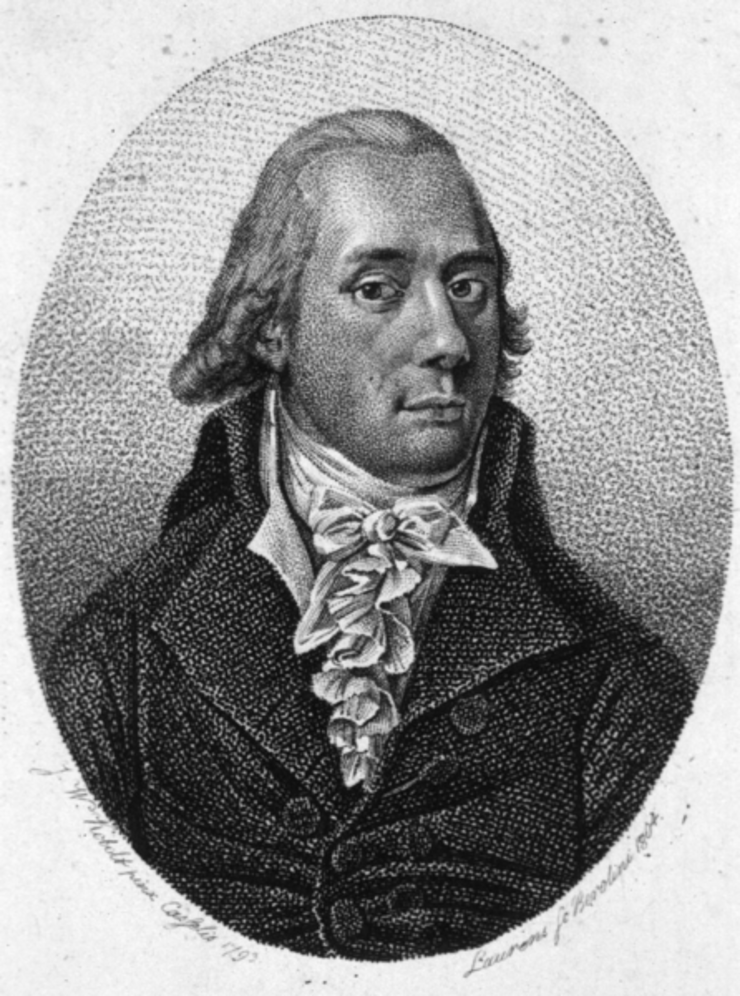
Johann Friedrich Blumenbach (1752-1840) is known in modern times primarily as the founder of physical anthropology. His field of activity, however, spanned what was called "natural history" in the 18th century. In addition to his actual profession as a physician, he would therefore be called an anthropologist, physiologist, zoologist, mineralogist, and geologist, according to modern usage. He also left his mark on Egyptology. In the present discussion, however, interests are concentrated mainly on his anthropological works and his theory of the educational instinct.
While the aforementioned fields of activity are accessible to science on the basis of the relevant publications, there has long been a lack of indexing of his correspondence. It allows Blumenbach to emerge directly in his activities as a scientist and teacher. With more than sixty years of teaching at the University of Göttingen, numerous lines intersect in his person, revealing him as a crossroads in the late 18th and early 19th centuries. In this interconnectedness, Blumenbach transcended the narrow boundaries of his subjects and gained general cultural-historical significance. The correspondence not only sheds light on Blumenbach's involvement in the extensive epistolary exchange of the time, but also on his correspondents, and sometimes allows us to adequately understand facts that, to the extent that letters are available at all, have remained obscure in parallel traditions. Blumenbach's correspondence therefore makes it possible to correct some existing views and interpretations. The importance of Blumenbach's correspondence lies to no small extent in this critical function.
Blumenbach was born in Gotha. His family was closely connected with the ducal family there. Throughout his life he cultivated this bond. Again and again he returned to his hometown. The close ties were also reflected in his correspondence with members of the princely house. These ties to his home and father city as well as his childhood and youth in Gotha, although there are only a few statements about them, have not yet been sufficiently illuminated. Nevertheless, it was in Gotha that Blumenbach experienced the decisive influences that ultimately made him what he then became and what he still is to the world today. This genius loci should not remain without influence on the edition of Johann Friedrich Blumenbach's correspondence, which has now found a home and connection to the Gotha Research Centre, sponsored by the German Research Foundation (DFG).
To the publisher's page of the Blumenbach edition.
Funding:DFG
Duration: 2010 - 2015
Edited by: Dr. Norbert Klatt
Image: Johann Friedrich Blumenbach (1752-1840).

In the course of the changes around 1700, a multifaceted nonconformist milieu had emerged in Europe, which had previously been recorded only in fragments. One of the best experts on this milieu in the Protestant countries was the Lutheran clergyman and dissident Friedrich Breckling (1629-1711), whose manuscript estate is kept by the Gotha Research Library. In exile in the Netherlands since 1660, he worked from there as a contact point, communicator and info-broker. His contributions to Gottfried Arnold's famous and widespread "Unpartheyische Kirchen- und Ketzerhistorie" (Unparthey Church and Heresy History) of 1699/1700 have had a particular impact on posterity, which also made possible a reception into the Enlightenment. Among these contributions, a list of so-called "truth witnesses" of early Pietism stands out, which Breckling presents in short biographies and evaluates for their religious merit. Even better suited for understanding and analyzing the networks of nonconformism that become tangible here is a hitherto completely unexplored, geographically arranged catalog from the Gotha estate, which forms the main source of the project.
Entitled "catalogus testium veritatis," the document lists some 1050 names of contemporaries on 18 pages, arranged according to 100 places and regions. The entries vary in length and give different information. There are details of profession, status, family status, address, other places of residence and activity, references to local relationships among persons, publications, and spiritual specialty. Crosses - often inserted later - note the death of a listed person. Attributes ("bonus", "electus", etc.) given to some names refer to a graded system of esteem. The aim of the project is to present this body of information in the form of a handbook, in which the persons - as far as possible - are recorded bio-bibliographically, maps show internal and external networks, and the overall data material is subjected to analysis and evaluation. While this unique document does not provide an objective inventory of Pietism around 1700, it does provide a very rich set of names from the nonconformist spectrum that has not yet been tapped in this way and may therefore be of importance for the study of regional as well as European constellations of the same. In addition, parallel to the handbook, all Brecklingiana not on site in Gotha will be brought together in copy or digitalized form and an edition of Breckling's correspondence (ca. 450 letters with over 100 persons from the period 1660 to 1711) will be prepared in order to gain further information on individual "truth witnesses". Pieces from the correspondence will supplement the handbook and illustrate the relationships between the correspondents and their exchanges.
An exhibition on the 300th anniversary of Friedrich Breckling's death in 2011 presented the first results of the project to a wider public in Gotha and Halle.
Contact person: Guido Naschert
Student assistants: Dennis Vöste, B. A.; Kai H. Schwahn
Funding: DFG
Duration: 01/2010 - 12/2012
Publication:
Guido Naschert: Friedrich Brecklings ,Wahrheitszeugen‘. Ein Handbuch zum religiösen Nonkonformismus um 1700, Stuttgart 2024 (Gothaer Forschungen zur Frühen Neuzeit; 23).
Image: Friedrich Breckling, AFSt Halle BÖTT B 600.
Duration
09/2012 - 02/2016
Funding
Thuringian Ministry for Education, Science and Culture, since 12/2014 Thuringian Ministry for Economis Affairs, Science and Digital Society: ca. 300.000 EUR
Applicant
Prof. Dr. Martin Mulsow, Director of the Gotha Research Centre.
Prof. Dr. Susanne Rau, professor for history and cultures of spaces in modern times
Dr. Kathrin Paasch, Director of the Gotha Research Library and deputy director of the UFB
Dr. Petra Weigel, Research Officer of the Gotha Research Library for the Gotha Perthes Collection
Cooperation partner
Research Group
Norman Henniges, M.A. (07/2014 - 02/2016)
Dipl.-Inf. René Smolarski B.A. (for the GlobMapLap, 01/2014 - 02/2016)
Dr. Nils Güttler (09/2012 - 03/2014)
Oliver Gondring, M.A. (11/2012 - 10/2013)
Project description
"Globalization and Local Knowledge: Collection-Related Research on the Publishing House Justus Perthes" is intended as a pilot project to comprehensively demonstrate for the first time the research potential of the cartographic-geographical "Gotha Perthes Collection" acquired by the Free State of Thuringia in 2003. In addition, it is intended to contribute to the further development of the collection's holdings and to establish a virtual map laboratory "GlobMapLaboratory". Until now, the Gotha Perthes Collection has been perceived by scholars and the general public primarily as a collection of maps. Maps undoubtedly formed the center of Perthes Verlag's production, but map production made up only a small part of the publishing activities. From Gotha, geographical knowledge was not only mapped, popularized and sold, Perthes was at the same time an institution in which knowledge from all areas of geography and natural research was collected and processed in a wide variety of media. Even for contemporaries, Perthes was not a passive distribution channel for geographic products, but - comparable to a university or scientific research institution - one of the most important and lively hubs of the "geographic scholars' republic," especially in the 19th and early 20th centuries. The central position of the publishing house in the scientific landscape of the time is still reflected today in the Gotha Perthes Collection. As a working tool of the publishing house, it contains not only the map collection but also groups of material that have received less attention up to now and that lie like a chain between the first field observations and the cartographic end products: Survey notes, field notes, map sketches, travel diaries and correspondence, cartographers' work diaries, copper plates, company archival records such as account books, an extensive specialized geographic library, and loose-leaf collections of detailed information by the meter. However, the interplay of the most diverse groups of materials, which is unique in this density of supply, has hardly been noticed by cultural-historical research up to now. The Gotha Perthes Collection is also, in international comparison, one of the few archives that was not organized as a university or as a library, but as a business and at the same time acted as a decisive driving force for scientific research. There is hardly a comparable collection that can be used to trace the economy of knowledge in such a density and complexity as in the Gotha collection. Using case studies, the project examines the uniquely interlinked material groups of the collection in their context and, building on this, develops longer-term strategies for innovative collection-related and third-party research. Closely linked to this, the GlobalMapLap will be established, through which selected materials and results of the case studies will be presented and map holdings of the Gotha Perthes Collection will be made available digitally. As a result, the profile of the Gotha Research Centre is to be expanded to include the focus "Collection-related history of knowledge and science of globalization in modern times", the existing infrastructure is to be strengthened, and the map laboratory is to be transformed into a virtual research environment for network-based scientific work in research and teaching. The project is to make an important contribution to the development of Gotha into the Baroque Universe, which is being vigorously promoted by the Free State of Thuringia as the second cultural heart of Thuringia alongside Kosmos Weimar, and to a supra-regional and international profiling of Thuringia's scientific collections and research landscape.
Publications and press articles
2012 Gotha as a hub in the world of geography (TLZ, September 26, 2012), URL: http: //www.tlz.de/web/zgt/kultur/detail/-/specific/Gotha-als-Knotenpunkt-in-der-Welt-der-Geografie-822756698.
2013 Gondring, Oliver and Rau, Susanne: Designing the GlobMapLab: Using maps as an entry point to the Perthes Collection, in: e-Perimetron, Vol. 8 (2013), No. 3, pp. 133-145. URL: http: //www.e-perimetron.org/vol_8_3/Gondring_Rau.pdf.
Güttler, Nils: Invisible hands: the colorists of Perthes Verlag and the scientification of cartography in the 19th century, in: Archiv für Geschichte des Buchwesens, Vol. 68 (2013), pp. 133 - 153.
2014 Güttler, Nils: Ubique terrarum: Gelehrtenportraits und ein Blumenstrauß für den Verleger, 2014.
2015 Henniges, Norman: "Natural Laws of Culture": The Viennese Geographers and the Origins of "Folk and Cultural Land Theory," in ACME. An International E-Journal for Critical Geographies 14 (2015), issue 4, pp. 1309-1351, URL: http: //ojs.unbc.ca/index.php/acme/article/view/1076/1146.
2016 Henniges, Norman / Meyer, Philipp Julius: "Das Gesamtbild des Vaterlandes stets vor Augen" Hermann Haack (1872-1966) und die Gothaer Schulkartographie vom Wilhelminischen Kaiserreich bis zum Ende des Nationalsozialismus. In: Journal for Didactics of Geography (2016), issue 4, pp. 37 - 60.
Henniges, Norman / Rau, Susanne / Smolarski, René / Tzschach, Heiko: More than just maps. The Virtual Map Lab (GlobMapLab) as Access to the Gotha Perthes Collection. In: Journal for Digital Humanities(2016), URL: dx.doi.org/10.17175/2016_001.
Güttler, Nils / Heumann, Ina (eds.): Collection Economies. Berlin: Kadmos 2016], URL: http: //d-nb.info/1121821308/04.
Smolarski, René: The Making of an Atlas - Step 1: The Concept, in: ProMissKa, 2016, URL: http: //promisska.hypotheses.org/57 (online article).
Smolarski, René: 'Crowdsourcing' and 'Citizen Science' in the 19th Century'. In: Oswald, Kristin / Smolarski, René (eds.): Citizen Arts Science. Citizen Science in Culture and the Humanities. Gutenberg: Computus 2016, pp. 71 - 87, URL: http: //www.computus-druck.com/press/neuerscheinungen/buerger-kuenste-wissenschaft.
"GlobMapLab": an interview with Prof. Dr. Susanne Rau about the Virtual Map Lab at the University of Erfurt, URL: aktuell.uni-erfurt.de/2016/11/12/5042/.
Further Information
Project page "GlobMapLab" (FZG)
Project page "GlobMapLab" (FB, Gotha Perthes Collection Gotha)
The originals of the correspondence between the Gotha princess Luise Dorothea and her lady-in-waiting Friedrike von Montmartin are in the Thuringian State Archives Gotha (call number Geheimes Archiv E XIII a 9). It consists of 404 manuscript pages in French. The volume contains 36 letters of Luise Dorothea, 35 letters of Friederike von Montmartin and 2 letters of Friedrich Samuel von Montmartin. The correspondence begins on June 27, 1751, shortly after the newly married court lady moved from Gotha to Regensburg, where her husband, an influential Freemason, became Gotha's envoy to the Imperial Diet in 1756, and ends after 11 months with Samuel von Montmartin's news of Friederike's death in childbirth on May 22, 1752.
The publication appears in the series of publications of the Thuringian State Archives Gotha, Friedensteinsche Quellen Nr. 3, Der Briefwechsel zwischen Luise Dorothea von Sachsen-Gotha-Altenburg und Friederike von Montmartin. Translated, introduced and commented by Bärbel Raschke, Gotha 2009. The edition is a contribution to the indexing of sources for gender research in modern times. For about 10 years, historical gender research has been strongly oriented towards the area of the German courts, since the tradition situation is comparatively favorable for corresponding questions. The publication and content analysis of the correspondence sheds light on the following problem areas from the perspective of and in relation to women at court:
Contact
Dr. Bärbel Raschke
Funding
Duration
10/2008 - 10/2009